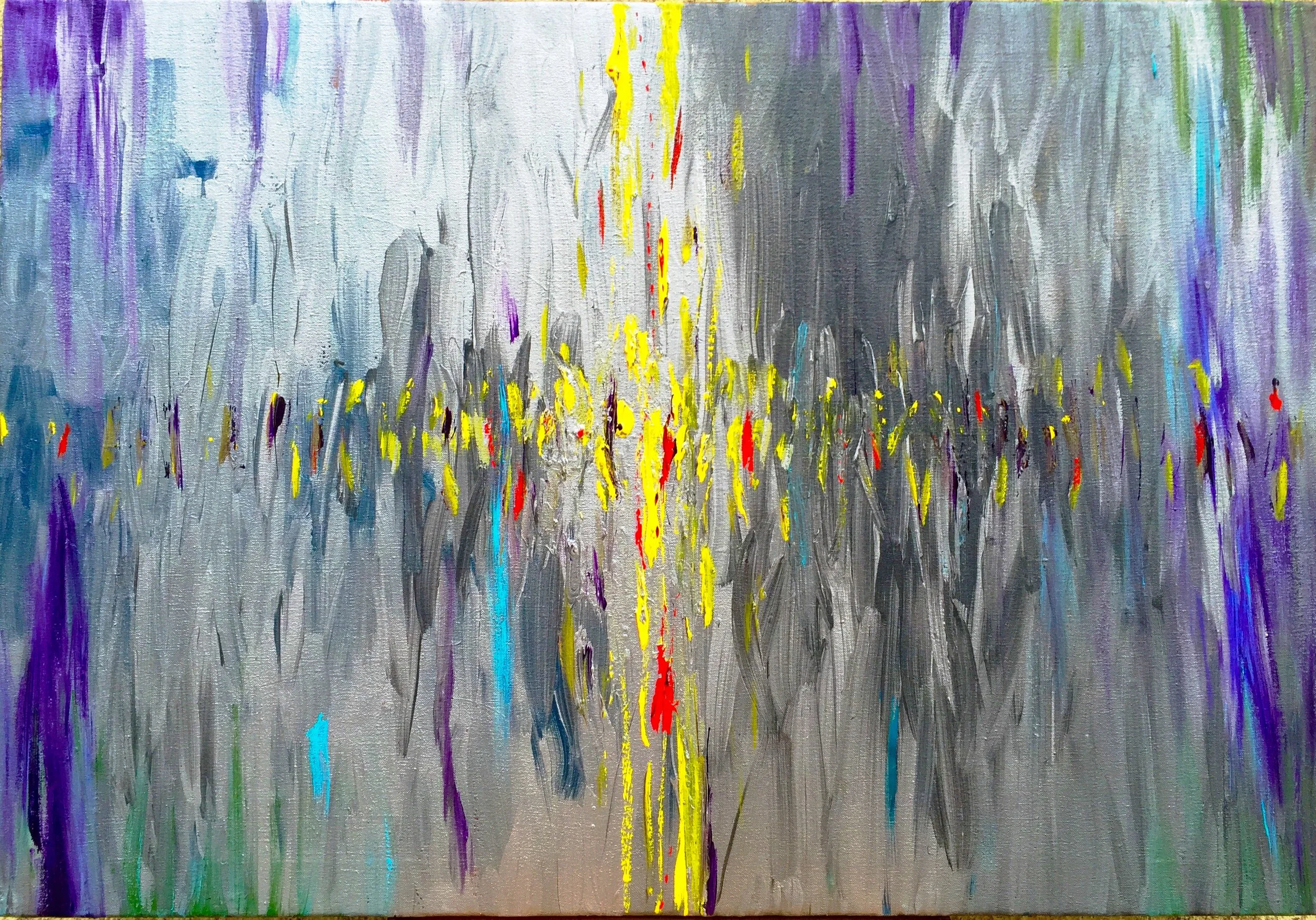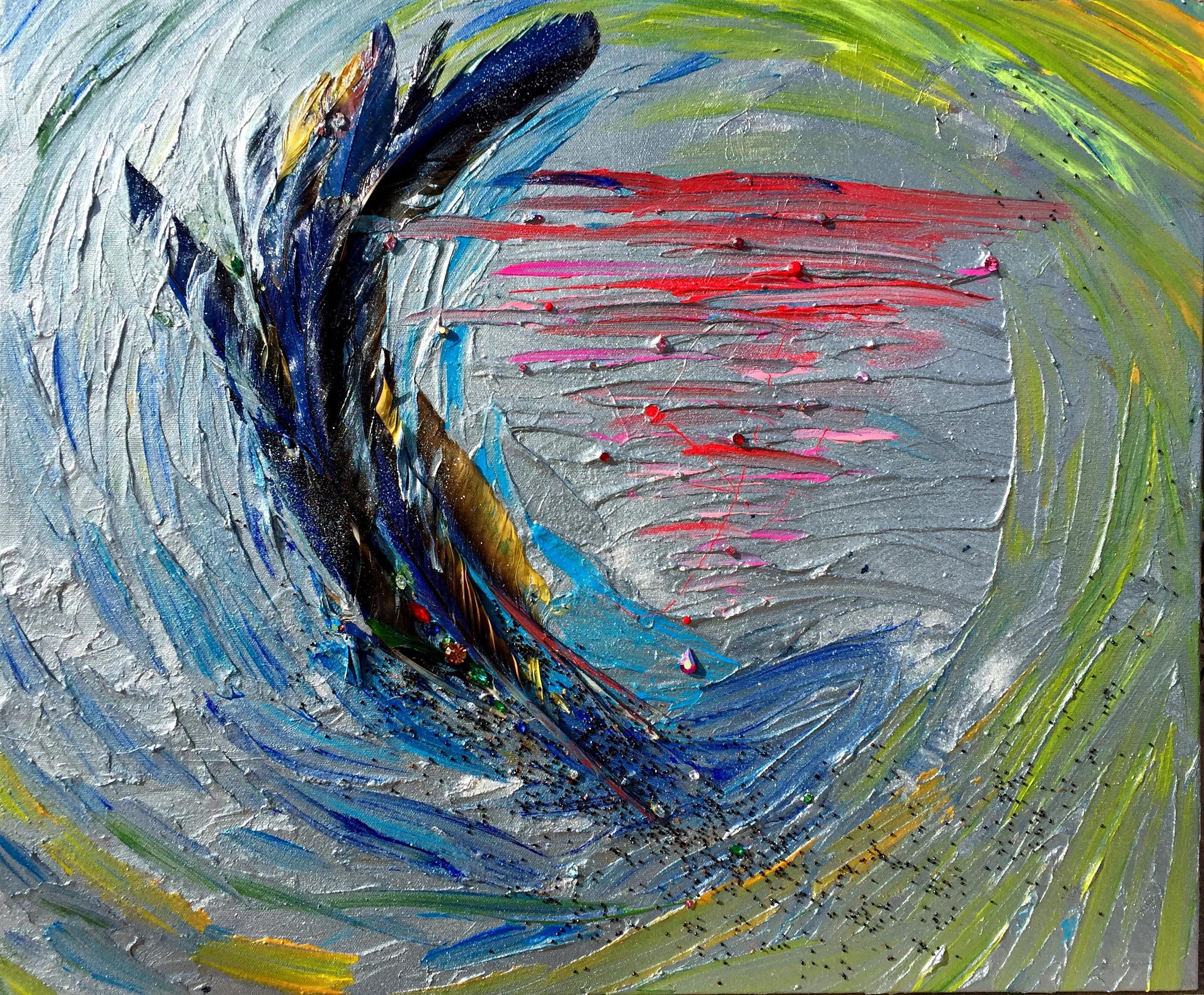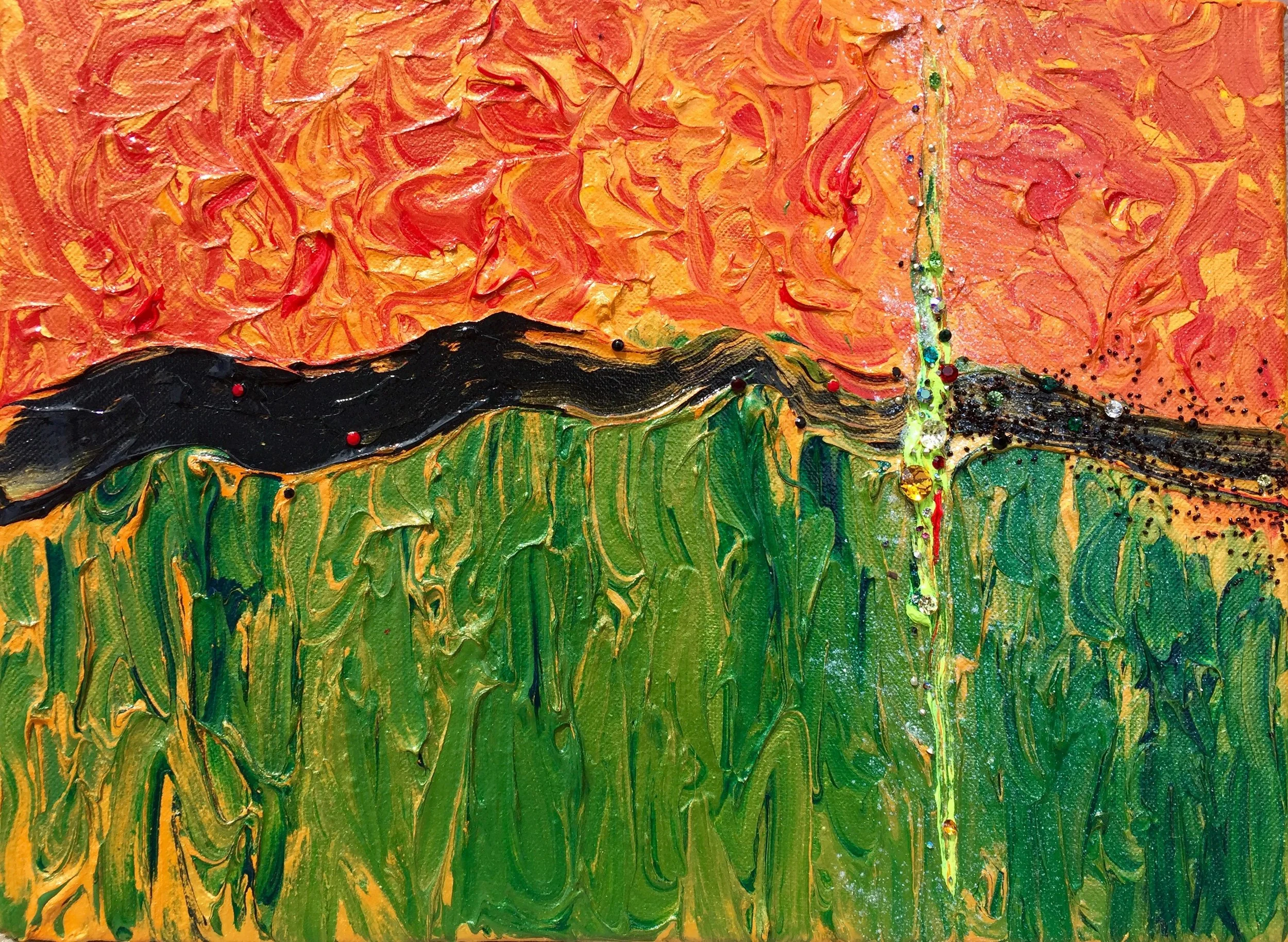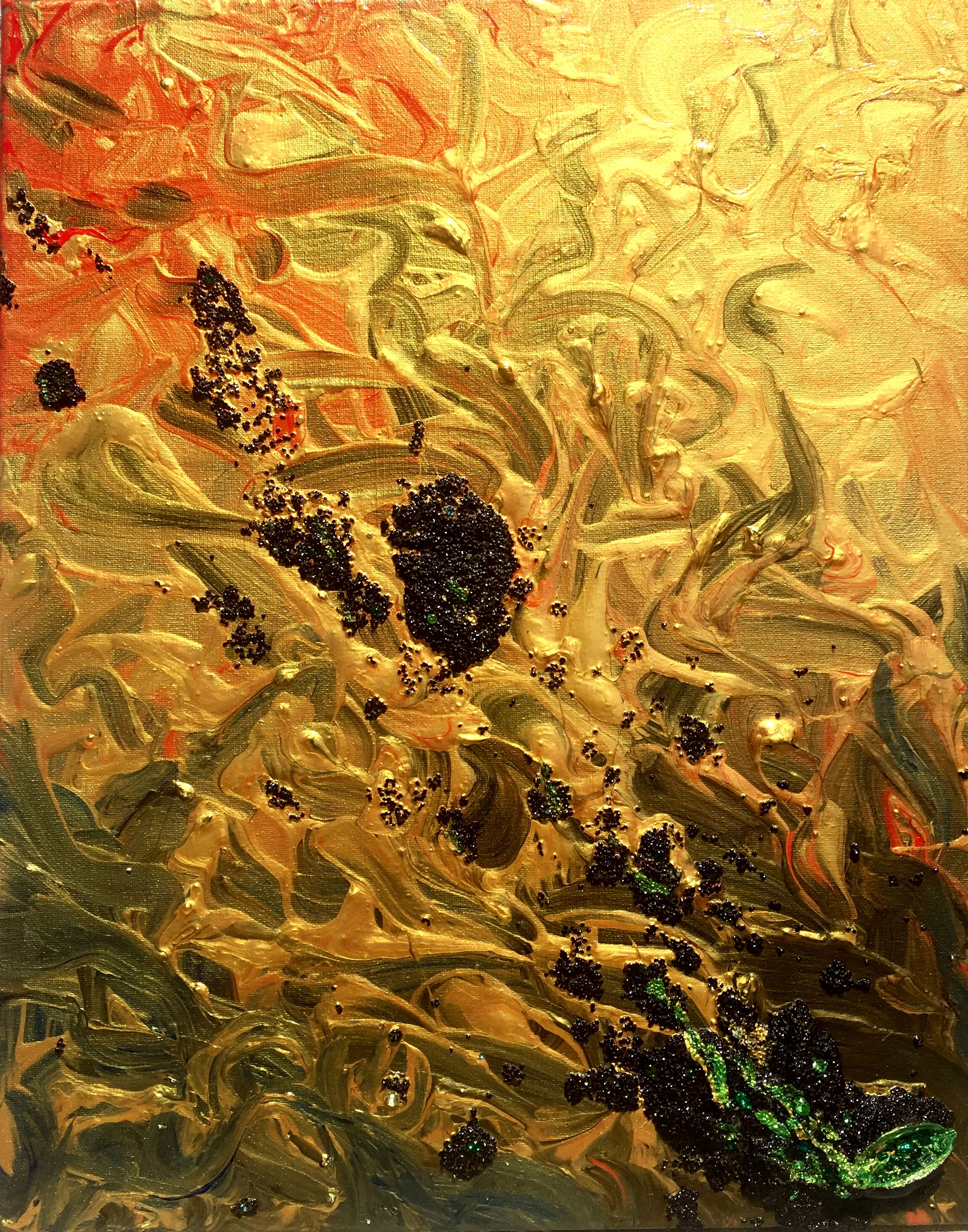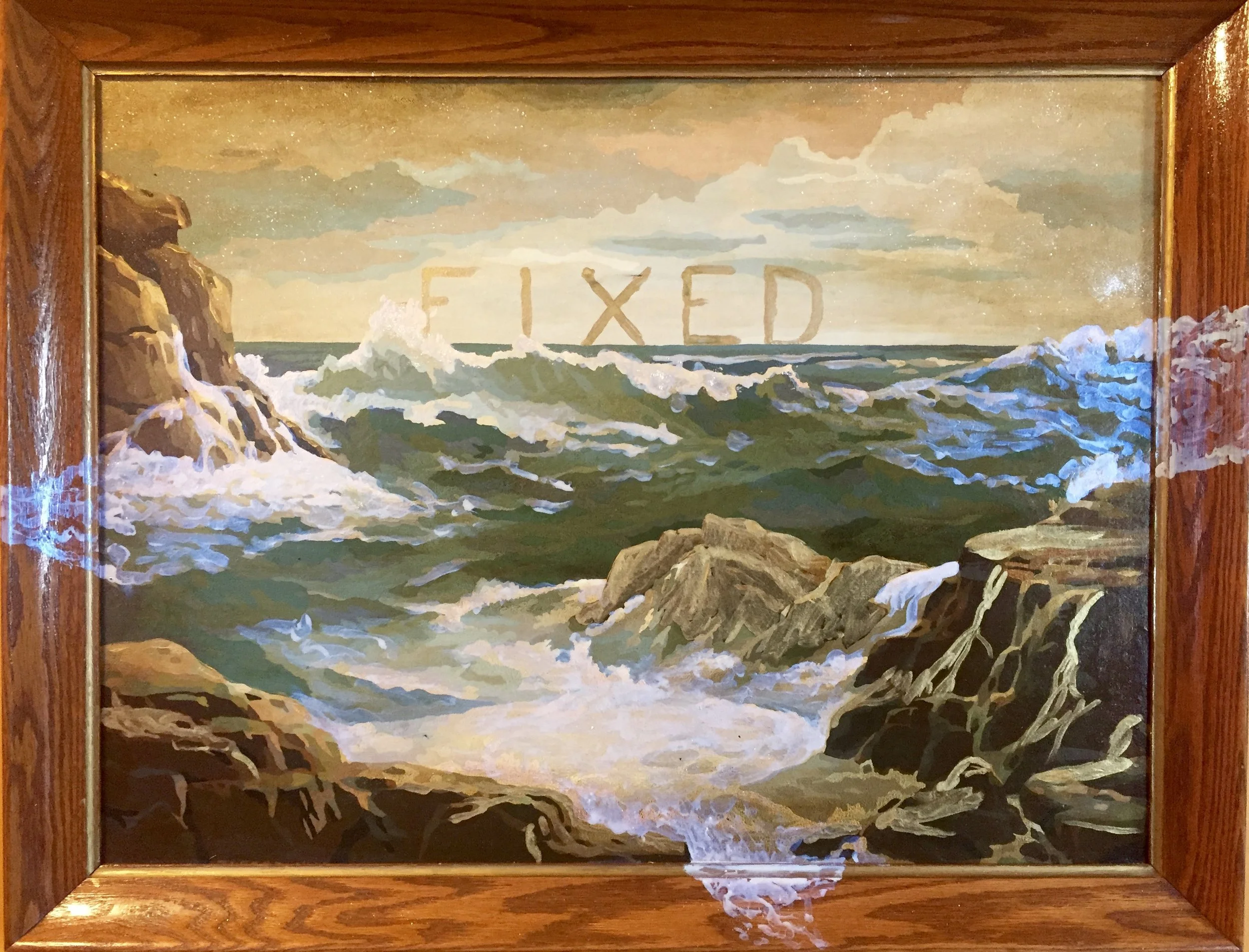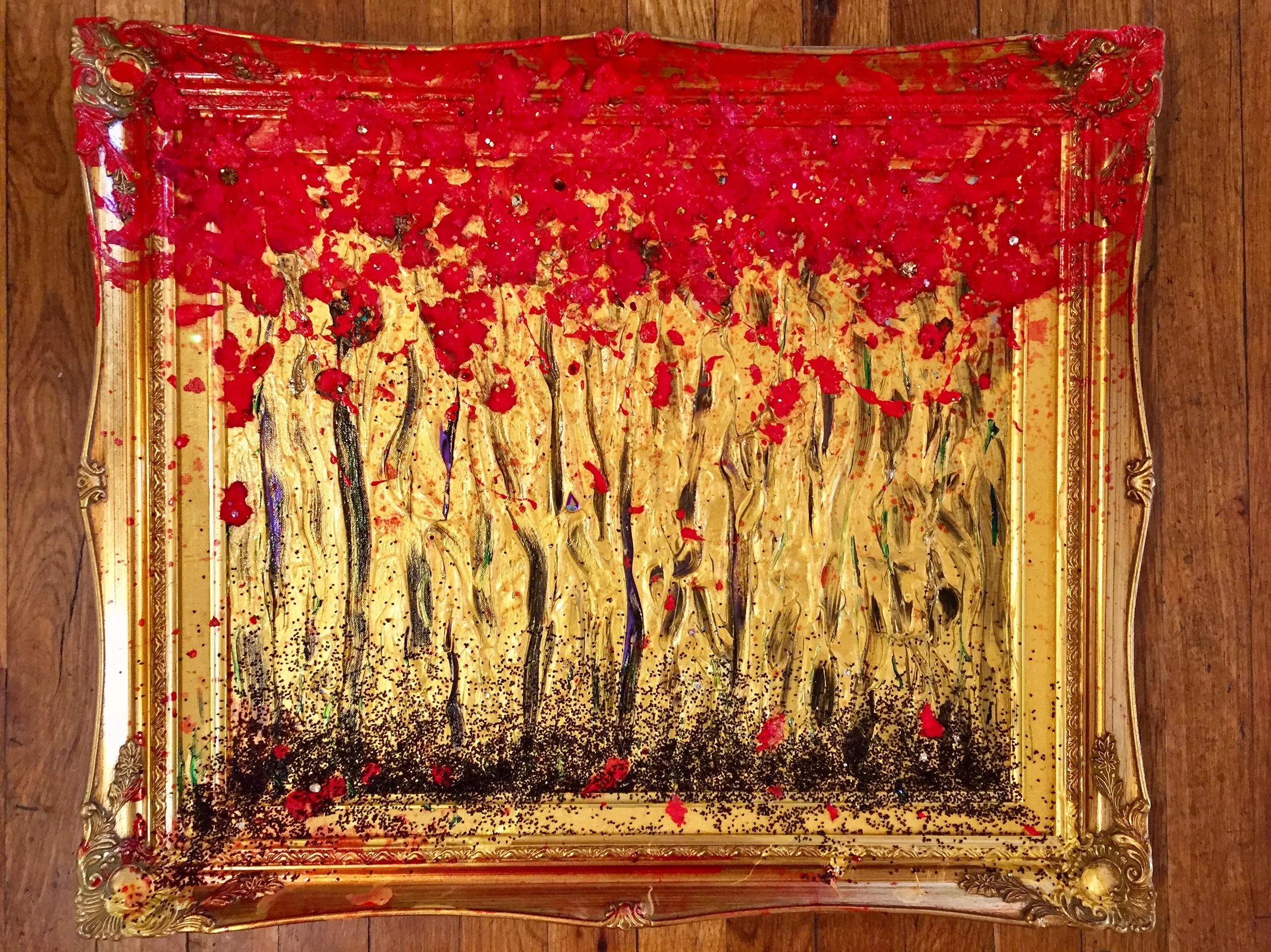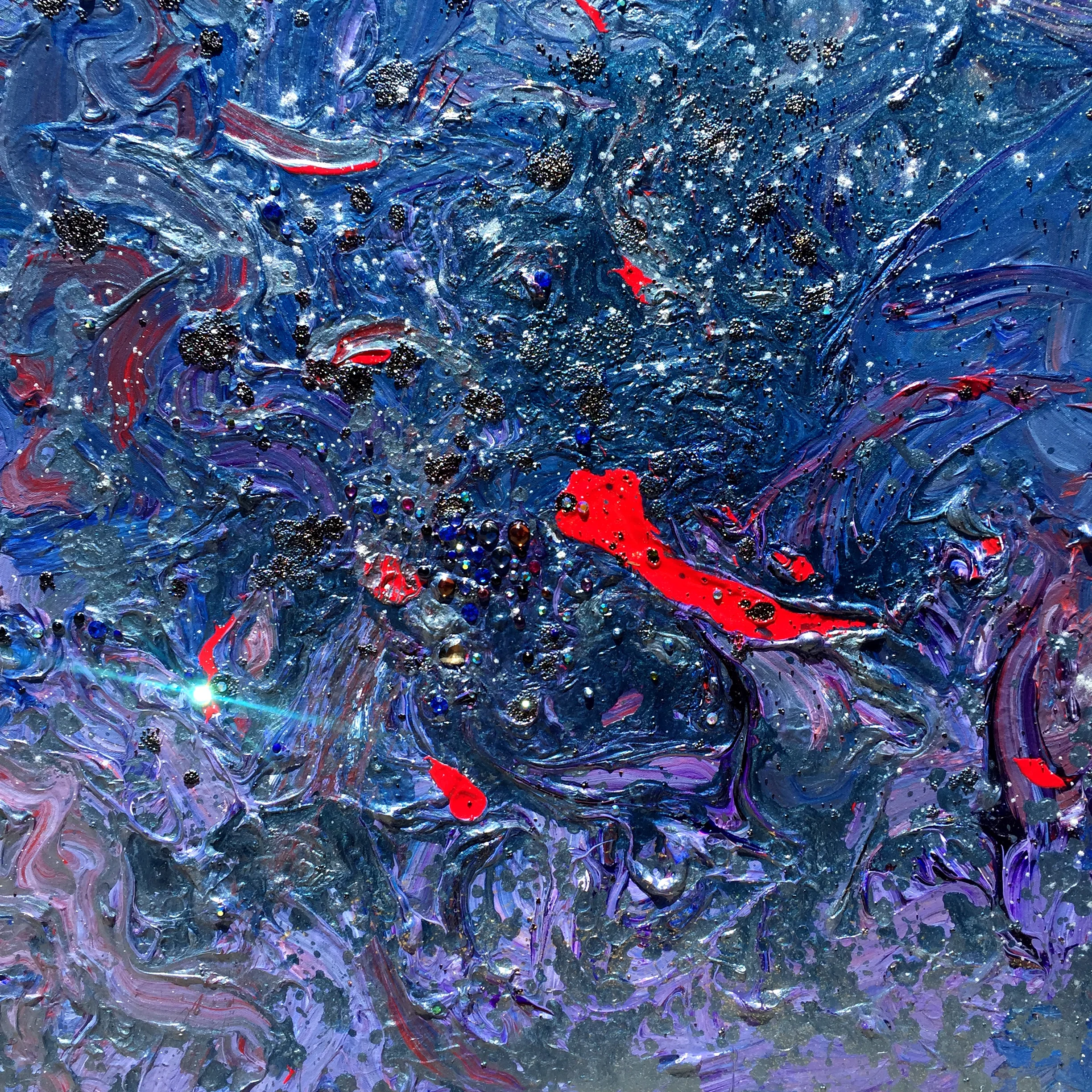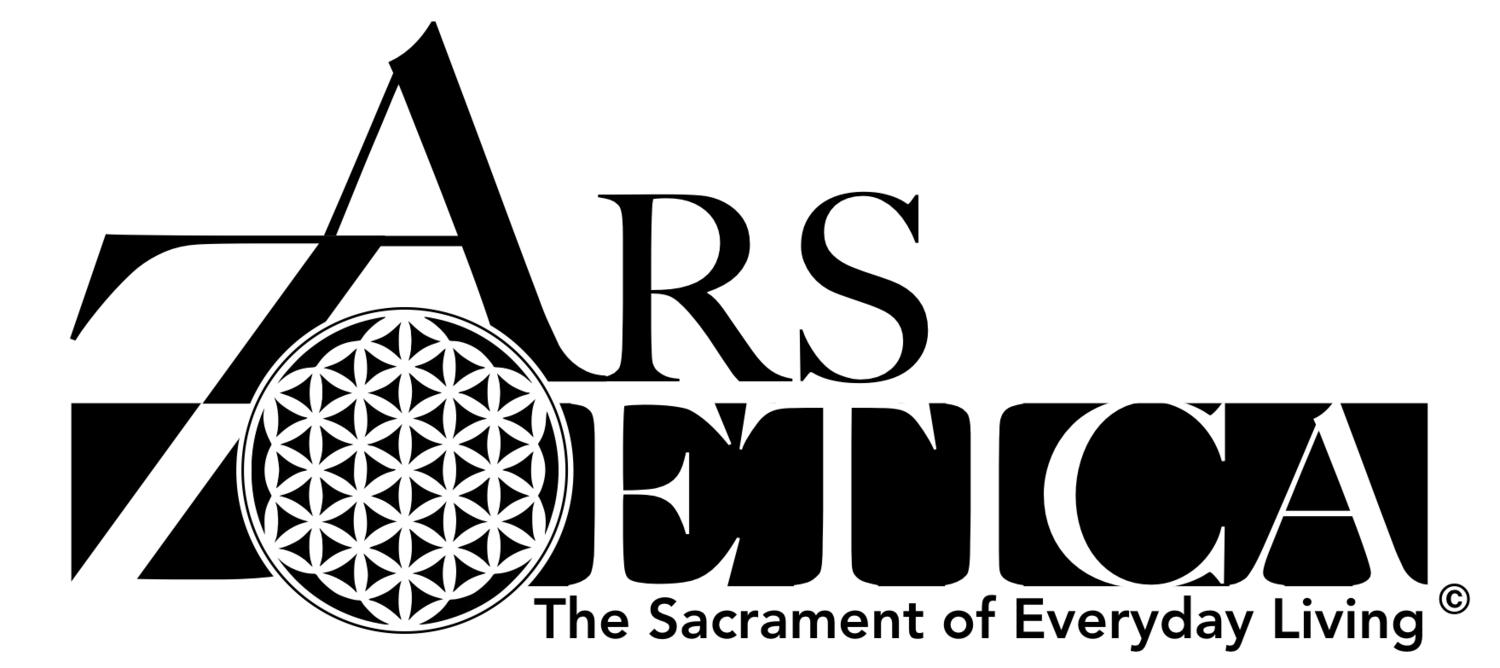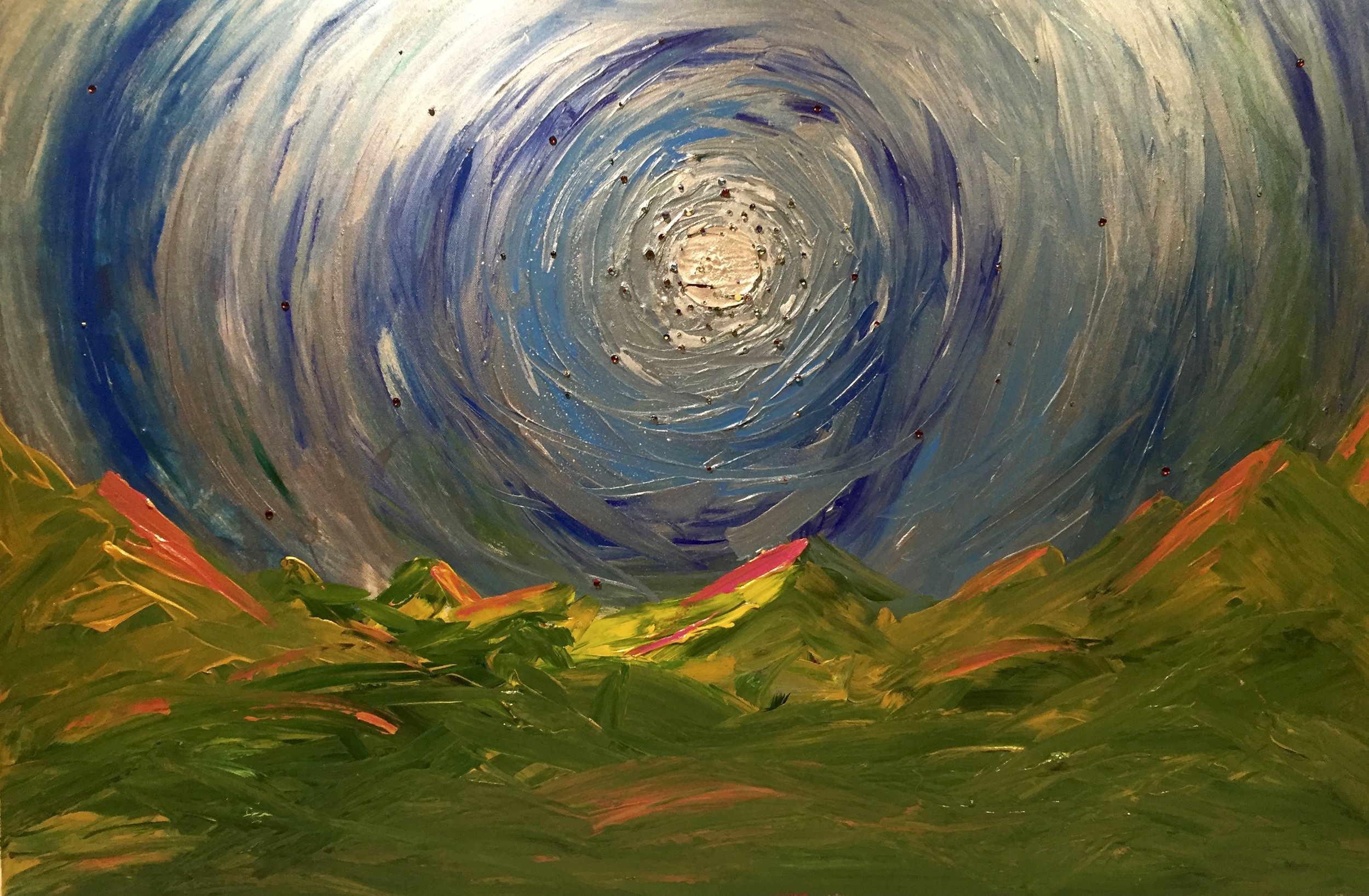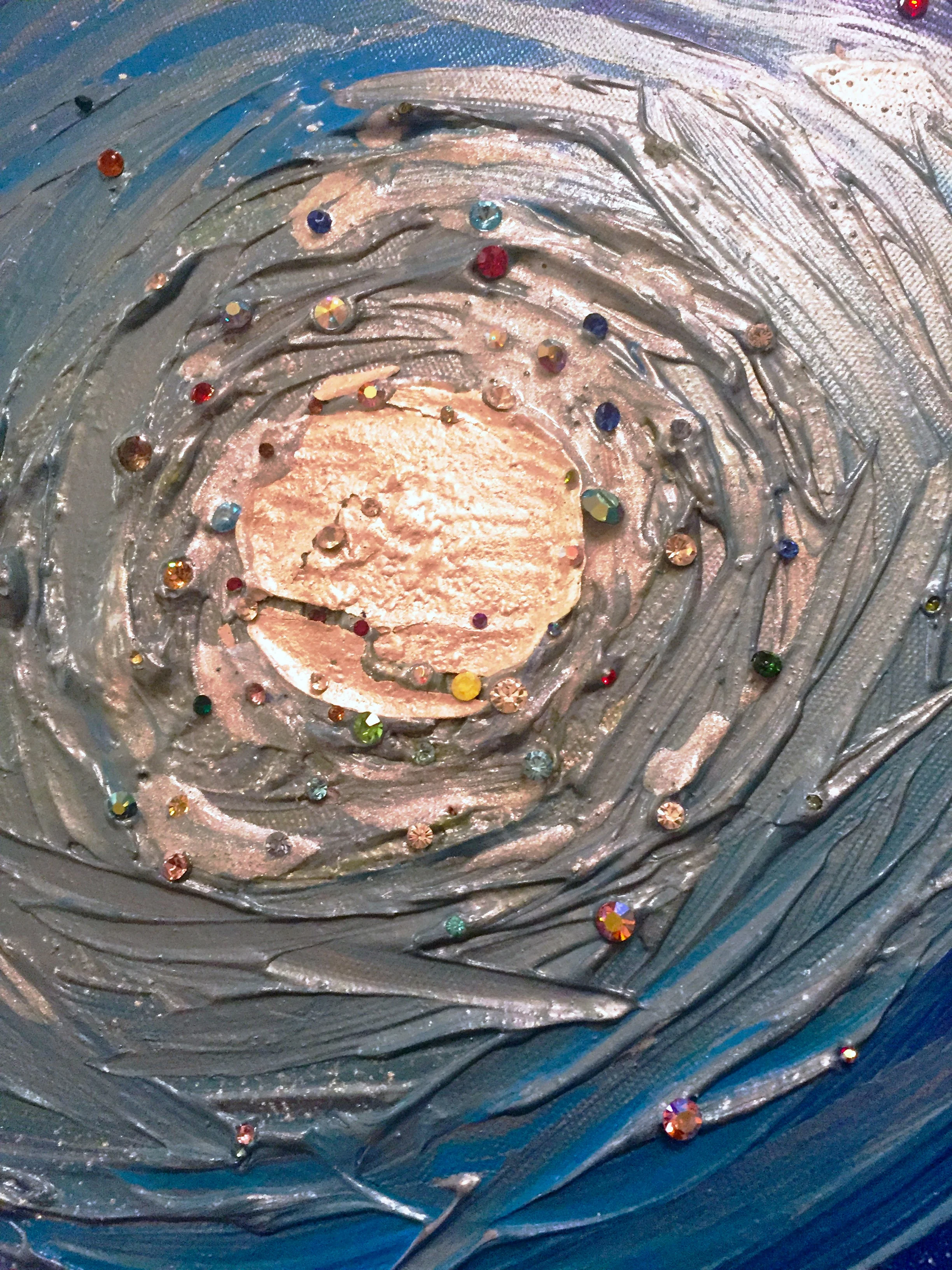This painting was one of the first where a patron specifically asked me to cover/redeem a painful piece of artwork. She had commissioned a family portrait from another artist several years before, and the finished product had haunted her after a series of tragic losses. In fact, she had never liked the painting even in better times, thinking it was poorly done and ugly, even though it was painted by a well-known (and expensive) artist.
At the same time, I had been training for Episcopal priesthood for about four years and was intensely struggling with the concept of God’s will. One of the key questions in the discernment process is “Do you believe that it is God’s will for you to become an Episcopal Priest?” To me, that’s just the wrong question. How can anyone know for sure? I had spent my entire life asking what God’s will was for me, and that path felt right, but I couldn’t honestly answer the question. My priest mentor told me to just lie and tell everyone that “Of course I do!? I just couldn’t do that. And I didn’t want to belong to any process that required me to be less than authentic, and that didn’t leave room for error or mystery.
This brought up so many other questions for me, and while I really was trying to do what I thought was God’s will, I just couldn’t believe that God, whatever God was, would care about a 200-year-old man-made denomination. People created religions, so why would some supreme being even care about the minutia of titles and qualifications for a man-made role? I saw priesthood as a way for me to accomplish the things I really and truly felt were God’s will for me, but I didn’t think it was the only path and didn’t think God was guiding my every step along the way toward ordination. (Although in my previous years in a non-denominational ordained ministry, I totally believed in that sort of thing. In fact, it was an integral part of my theology back then.)
So, after an especially difficult meeting with my discernment committee (which now, after some distance, I can say was outright abusive), I came home and went into a state of deep prayer, and in that state got this canvas out and just poured myself into the piece. Every stroke seemed to emerge without thought, but in pure emotion, prayer, and spirit. Being classically trained in portraiture, I had only completed an artwork in a similar state once before, as part of an exercise using “Inner Child” work, but this experience was so deep and so profound it changed the way I approached art altogether.
Something deep inside of me recognized that I was obfuscating the original painting that my client hated, while also expressing the dynamic tension of divine obfuscation: both the beauty of the mystery and the pain of not having any concrete answers.
The almost liquid state of the painting reminded me of fog, currents in water, and other elements that obfuscate our view, and I was literally transforming something unwanted, redeeming it, through the act of purposeful and prayerful obfuscation. It felt holy. When I was done I realized that I had painted a cross in the patterns of light, and had also used green, a ubiquitous symbol of growth, and red, a symbol for passion or blood, and all of these together spoke of the fact that my faith, my religion, my beliefs and spirituality - all were being questioned, and in the questioning, I was opening myself up to doubts and mysteries that may never be fully explored, much less answered with any clarity. Even so, there is beauty in the mystery, growth and life among the pain and loss, and serenity inside the chaos.
Finally, I left one blue streak of the original painting exposed, just hinting at what was beneath the surface, reminding me that underneath all of this was what some perceived to be failure, something ugly, unsatisfying, and even something to resent. What emerged was, I think, a piece of great beauty, and this has become one of my most widely appreciated works. In the end, isn’t that the crux of transformation and redemption? To me it is ironic and beautiful that the pain of unknowing, and the uncomfortable search in the fog of obfuscation led to such a pivotal piece in my art career.
[NOT FOR SALE]

